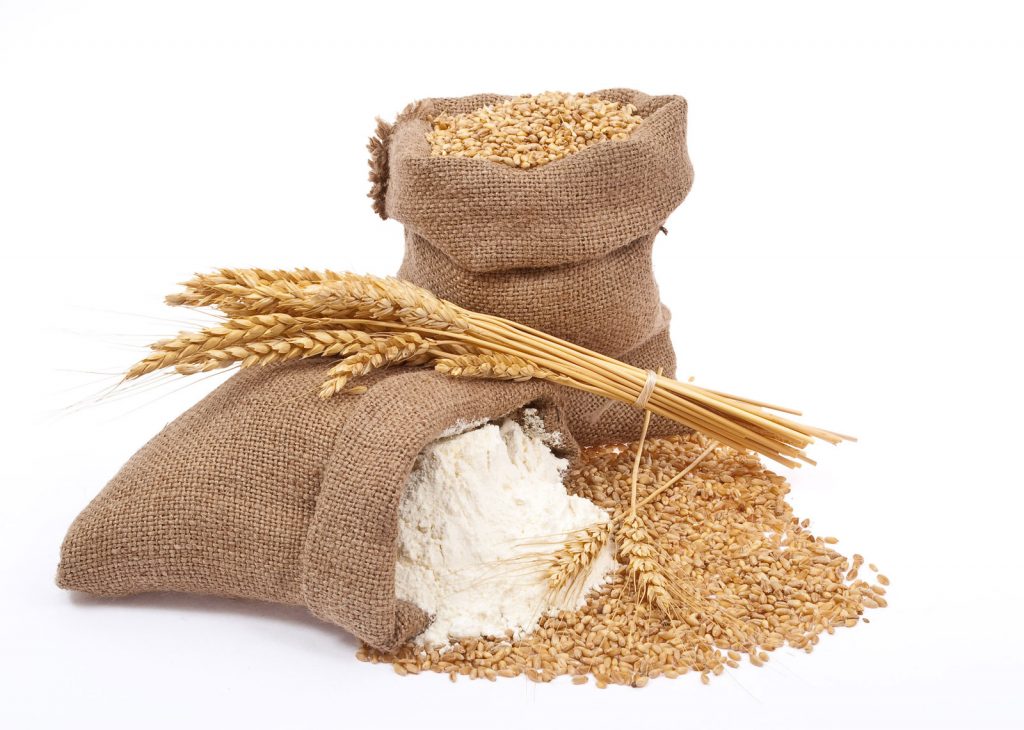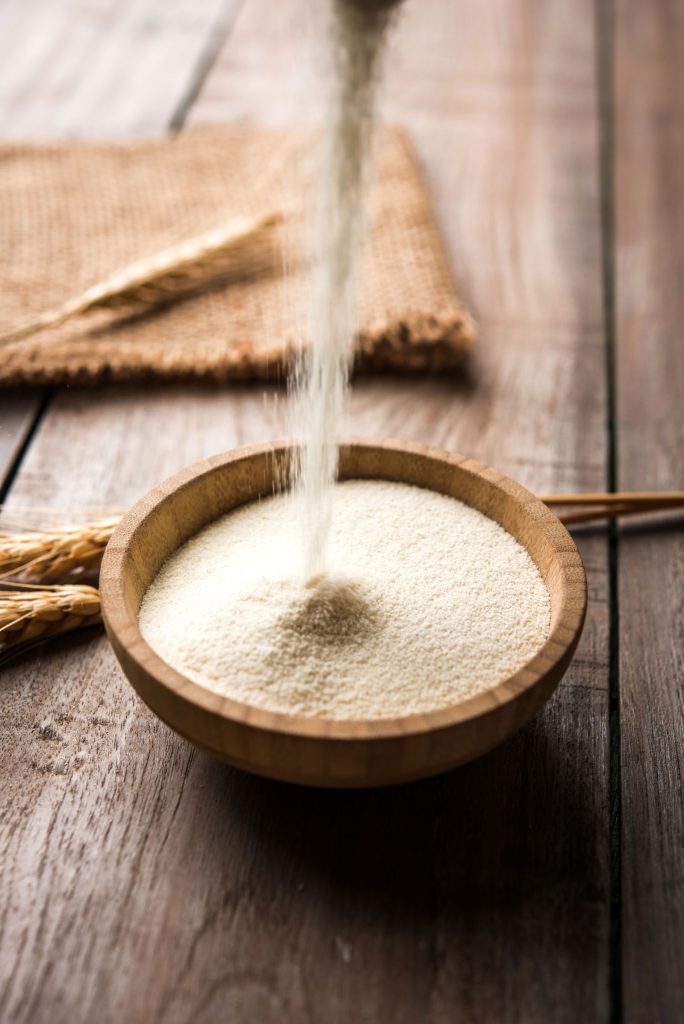
Organic flour is not artificially processed or chemically ripened. It also develops more robustly, absorbing more nutrients from the soil, thereby making the flour healthier and more nutritious.
Many believe that while aesthetically pleasing, it is a less healthy flour, and the bleach can impart a bitterness to the flour.
Organic flour on the other hand, keeps its bran and germ content intact, is aged naturally and has no artificial additives. Aging naturally exposes the flour to oxygen which, over time, accentuates the grains’ natural flavors.
The fertility of the soil and organic (natural, not chemical) fertilizer enables the flour to preserve the nutrients of two fundamental parts of the wheat: the bran and the germ.
The absence of chemicals reduces the presence of nitrogen and, consequently, of gluten proteins which, in industrial flours, can represent toxic fractions. The entire grain production cycle must not include any type of artificial contamination, ensuring full respect for the environment, as well as obvious benefits to taste and health. In fact, organic farming allows the preservation of vitamins, fibers, mineral salts and those enzymes that make the flour much more digestible, aromatic and nutritious.
Increasingly, consumers are choosing to pay more attention to health and the environment when shopping for food.
Two years ago, organic products accounted for 3.9% of overall food and beverage sales, with growth of more than 5% confirming a trend that has been going on for two decades. The surge in sales of organic products, around 20%, has consolidated further progress in some categories. Organic flours represent a very important slice of this market as a fundamental basis for many of the top foods in the diet of the Western world and beyond. The agri-food industry also continues to move towards organic products. The major companies now have their own organic line, as well as private label products.
In the United States, the organic market is also very lively. Just before the pandemic, two organic chains (Lucky’s market and Earth Fare) declared bankruptcy, but the sector remains in excellent shape. The turnover of organic food has more than doubled in 10 years, from US $ 24 billion in 2010 to over 55 billion in 2020, and organic food today accounts for 5.8% of food sales. Leading the growth are giants like Walmart and discounters, as well as Whole Foods Markets, which is using promotions to expand the customer base.
Closely linked to the organic trend is the change of pace dictated by a lifestyle that focuses on healthy nutrition tout court and the protection of biodiversity: this has led to a growing demand for vegan and vegetarian products, whose consumption has almost tripled in the last five years also thanks to the appeal they have for “flexitarians” and for the many meat-eaters who are reducing their meat consumption. Hence there is greater attention for organic flours, especially as organic flours contain the nutrient rich germ and bran, discarded in the production of conventional flours.
Organic flours are often stone or cylinder ground, in this way a much healthier and more digestible product is obtained, because many nutrients present in the grain are not discarded. Furthermore, through these techniques, flours not deriving from organic methods are kept separate.
Flours grown and produced with organic and natural methods while respecting nutritional values are the cornerstone of an ever-growing and appreciated foodway tradition. Furthermore, organic flour, by not using additives of chemical origin and therefore a reduced amount of nitrogen, has a lower presence of gluten.
Semolina flour is the coarse, purified wheat middlings (intermediate milling stage) of durum wheat mainly used in making couscous, pasta, and sweet puddings. The term semolina is also used to designate coarse middlings from other varieties of wheat, and sometimes other grains (such as rice or corn) as well. With such a unique name, it may not surprise you that semolina flour is most commonly used in Italy. This is why people refer to it as pasta or macaroni wheat flour, because semolina flour’s number one use is in the making of pasta or couscous. The main reason people prefer semolina for pasta-making is that it is extremely high in gluten, which helps keep the shape of pasta during cooking. This is the reason why pasta can be made in all different shapes and sizes without risk of falling apart or becoming a giant blob while it is boiling. Semolina flour is a staple food in Nigeria, where it is mixed with water and boiled to eat with soups or stews. Couscous, made with semolina, is a common food in other parts of Africa as well as the rest of the world. In European countries, semolina is also used for sweet puddings and it can form a type of porridge when boiled. However, the number one use for semolina flour is in pasta, so it follows that it is most common in Italy and surrounding areas. If you have ever asked yourself why pasta is typically yellow, that is because semolina flour is typically more golden than all purpose flour. You may see semolina flour in other recipes, however, such as cakes, breads, or pies, and it helps make a tasty crust for bread! With its high gluten and protein content, it is a good candidate for certain desired textures, so check out all of our favorite semolina flour recipes and let us know which ones you loved.
